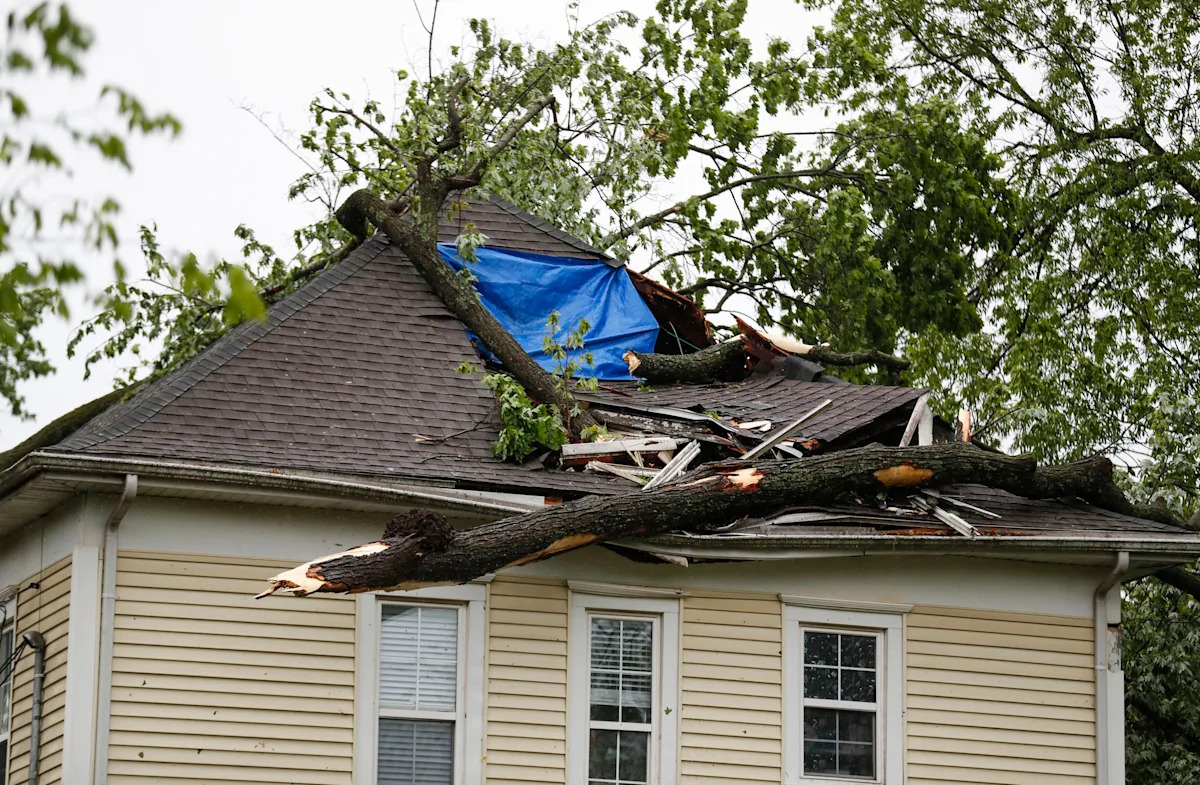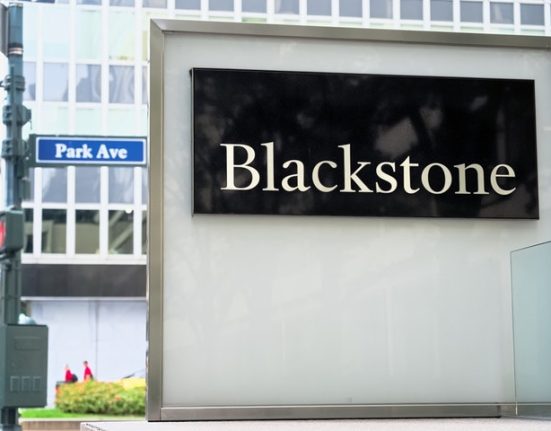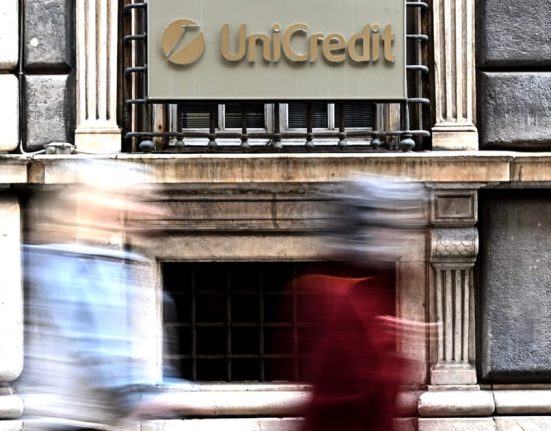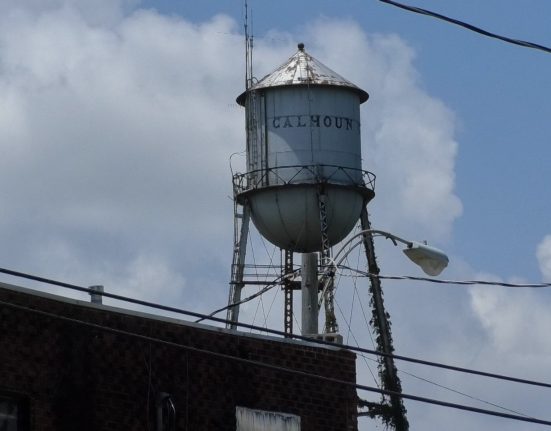Springfield has seen its share of severe weather this spring and summer, with several damaging high wind and flooding events. Now, those who suffered physical or economic losses in the initial April 29 storm may take advantage of low-interest federal disaster loans.
The U.S. Small Business Administration issued a disaster declaration in late June in response to a request by Gov. Mike Kehoe. The declaration covers Greene and Christian counties, as well as Barry, Dade, Dallas, Jasper, Lawrence, McDonald, Newton, Polk, Stone and Webster counties.
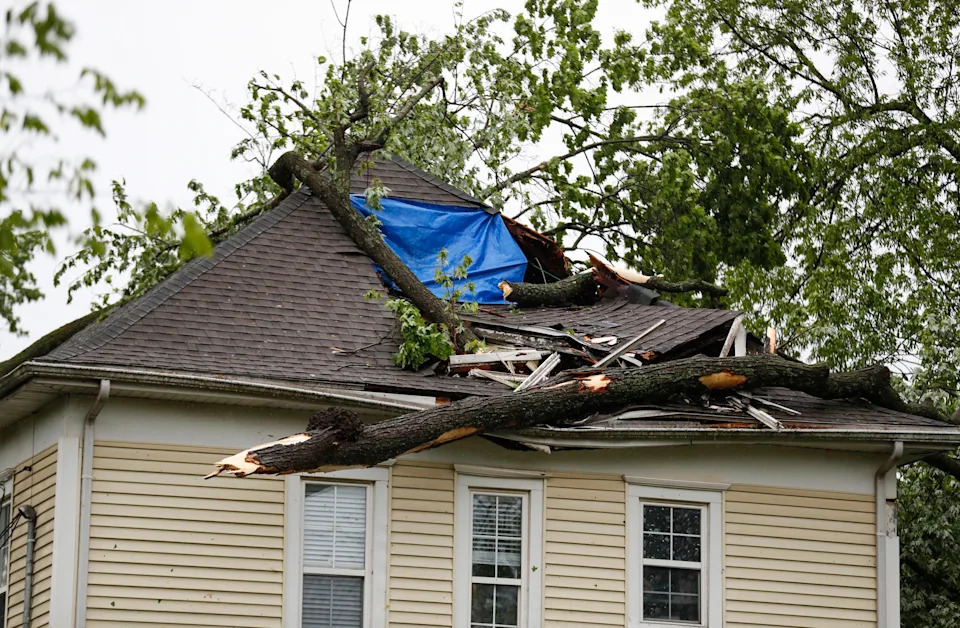
A tree on a house near West Elm Street and South Douglas Avenue after strong storms rolled through the area on Tuesday, April 29, 2025.
Although several weeks have passed since the declaration was made, the number of people who have applied for aid remains extremely low, according to Michelle Genovese, the public information officer for SBA’s Office of Disaster Recovery and Resilience.
Genovese said that, while she understands people may want to avoid taking on additional debt, everyday folks who suffered damage in the storms likely have few options with rates as low as SBA’s loan offerings.
“The Small Business Administration is actually the largest source of recovery after a disaster for homeowners,” Genovese said. “And many people, when they hear ‘small business’ they think that we’re just taking care of business and … I think that scared people away … It’s a taxpayer benefit program, so it’s open to everybody, not just businesses.”
What disaster loans are available for physical damages?
Homeowners and renters are eligible to apply for home and personal property loans and may borrow up to $100,000 to replace or repair personal property, including clothing, furniture, cars and appliances. Homeowners can apply for up to $500,000 to replace or repair their primary residence.
Business owners and nonprofits are eligible to apply for business physical disaster loans and may borrow up to $2 million to repair and replace disaster-damaged or destroyed real estate, machinery and equipment, inventory and other business assets.
Applicants may also be eligible for a loan increase of up to 20% of their physical damages, as verified by the SBA, for mitigation purposes. These improvements could include insulating pipes, walls and attics, weather stripping doors and windows, and installing storm windows to prevent damage from future disasters.
Genovese noted that if people have already used credit cards to pay for storm damage repairs or replacements, the loan can help make those payments, preventing people from going into credit card debt at higher interest rates.
What loans are available for financial losses?
Small businesses, small agricultural cooperatives, nurseries and private nonprofit organizations impacted by financial losses related to the storms can also take advantage of SBA’s Economic Injury Disaster Loan program. This is not available to agricultural producers, farmers or ranchers however, except for aquaculture enterprises.
This loan program is for working capital needs caused by the disaster, available even if the business did not suffer any physical damage. This money can be used to pay fixed debts, payroll, accounts payable, and other bills not paid due to disaster.
Genovese said these are ways to prevent businesses from closing, which is not a rare occurrence after disaster. She said that money received by businesses goes back into the community through products purchased and labor hired, magnifying the impact to a particular community.
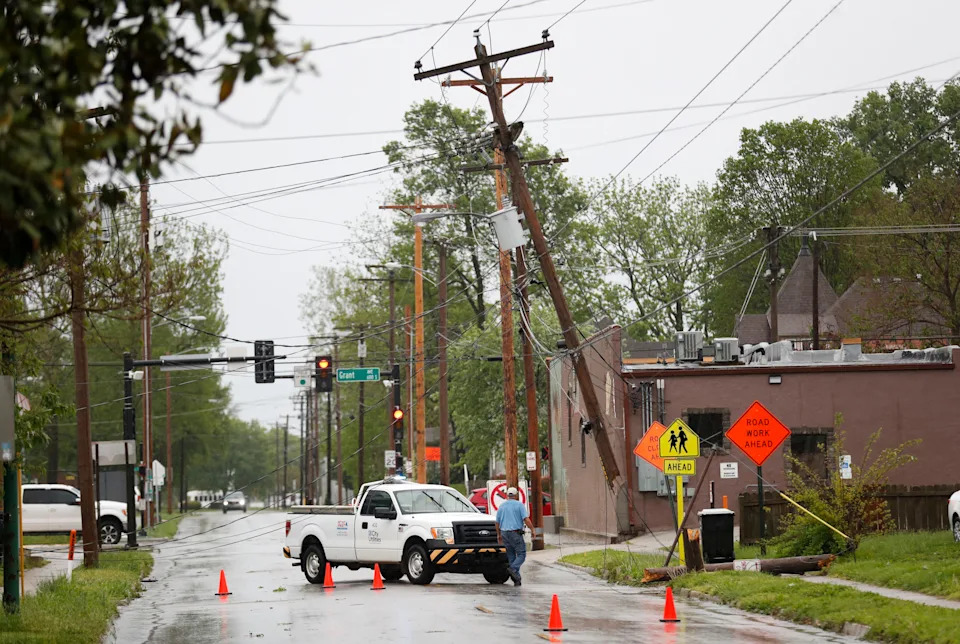
A broken power pole near West Mt. Vernon Street and South Grant Avenue after strong storms rolled through the area on Tuesday, April 29, 2025.
What are the interest rates, terms?
Interest rates vary per type of applicant. For businesses they can be as low as 4%, for nonprofit organizations 3.62% and 2.81% for homeowners and renters. Terms can be up to 30 years.
Payments are not due, and interest does not accrue, until 12 months from the date of the first loan disbursement.
Loan amounts and terms are set by the SBA based on each applicant’s financial condition.
Where to get help, apply for SBA disaster loans
Genovese encouraged everyone who may have suffered damages from the April 29 storm to apply, even if only to have the option for funding later, rather than waiting for an insurance estimate or other financial help to become available.
“There is no cost to apply, there’s no obligation to take the loan,” she said. “People have options, but if they don’t apply, they don’t have any.”
People can apply online by visiting www.sba.gov/disaster. With questions, applicants can also all SBA’s Custome Service Center at 800-659-2955 or email disastercustomerservice@sba.gov.
In Greene County, a Disaster Loan Outreach Center has been set up at the Greene County Public Safety Center at 330 W. Scott St. in Springfield. It is open Monday through Friday 9 a.m.-6 p.m. At the center, SBA representatives will be available to answer questions, explain the application process and help individuals complete applications. Walk-ins are accepted but an in-person appointment can be made in advance at appointment.sba.gov.
More: City of Springfield announces curbside storm debris pickup, volunteer opportunity
Physical damage applications are due Aug. 22. Businesses have longer to turn in their economic injury applications, however, which are due March 23, 2026. Genovese said businesses receive a lengthier application window for economic injury as they may not see damages until six months after the disaster struck.
She said decisions typically are communicated within two to three weeks from application submittal. Once all loan documents are signed and cancelled checks submitted, money would be deposited within five days.
Marta Mieze covers local government at the News-Leader. Have feedback, tips or story ideas? Contact her at mmieze@news-leader.com.
This article originally appeared on Springfield News-Leader: Greene County residents, businesses can apply for storm repair loans

